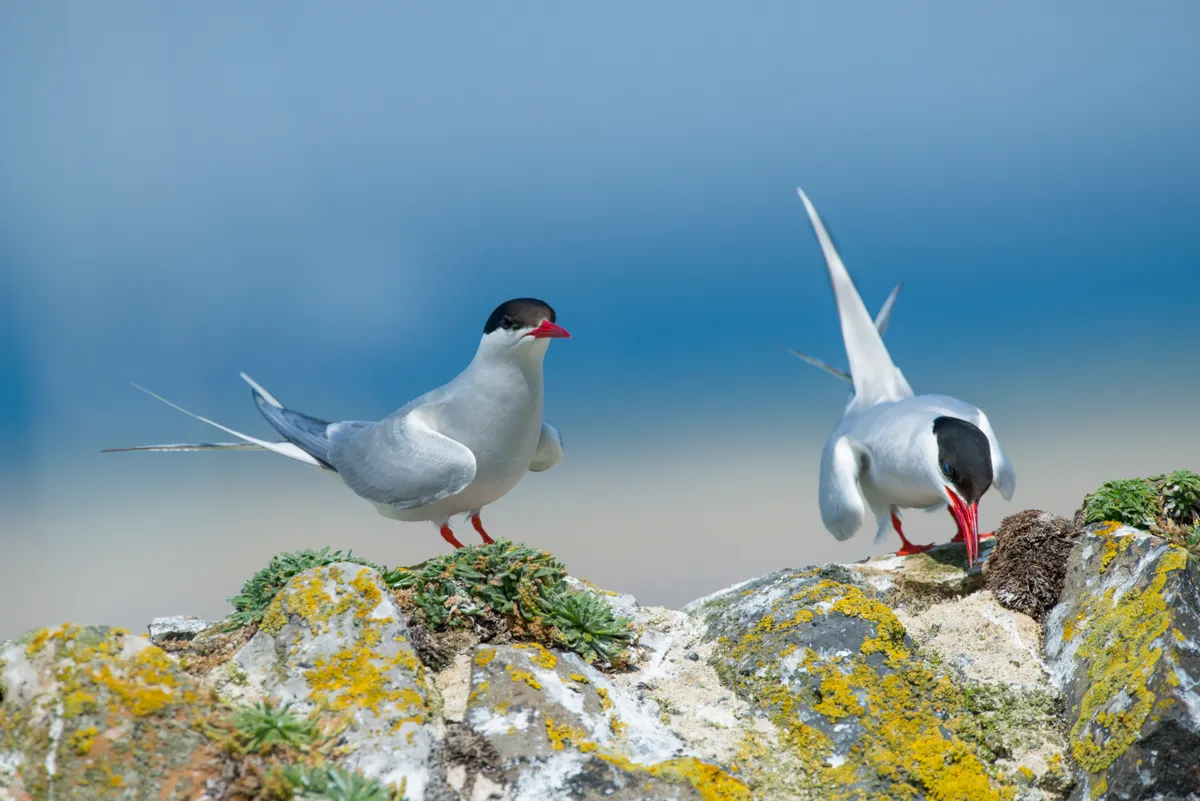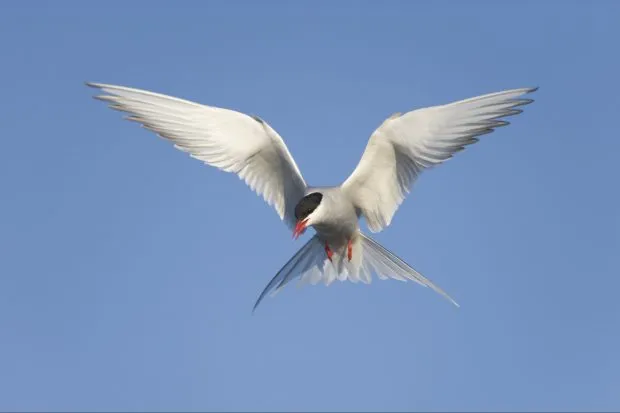The Arctic tern (Sterna paradisaea) is a true record-breaker; the bird with the longest regular migration in the world.
It is a common seabird in the north of Britain and especially numerous in Scotland, with 52,500 breeding pairs, and can be seen from April to October.
In this guide we take a closer look at the Arctic tern, including what they look like, migration patterns, habitat and distribution.
Interested in learning more about Britain’s birds? Check out our guides to puffins, gannets and auks.
Terns of Britain
Arctic terns, common terns and little terns grace Britain’s shores in the summers months. Learn how to identify them – and other tern species – with BBC Countryfile Magazine’s guide to terns.

Arctic tern identification
The Arctic tern torments birdwatchers, forming a duo with the common tern, two species that are very difficult to tell apart – and the roseate tern makes things even more difficult.
The Arctic tern is lighter and more 'fluttery' on the wing than the common, its wings look whiter and more translucent, and it has a longer tail, but these are all features that require fine judgment – hence many birdwatchers give up and use the hybrid term 'commic tern' instead.

Arctic tern migration
Boasting the longest regular bird migration in the world, the Arctic tern is a true record breaker. It breeds in the northern hemisphere, often well above the Arctic Circle, and then flies all the way to the other end of the world, to Antarctica, where it spends our winter. It might fly as much as 90,000km in a year.
And what is particularly intriguing is that it probably encounters more daylight than any other animal in the world (along with any ticks or mites it might carry!). A bird in its lifetime may migrate 2.4 million kilometres.

Arctic tern distribution and habitat
Arctic terns are mostly northerly in Britain and are especially numerous in Scotland, where there are some large colonies. In the Western Isles, Shetland and Orkney they are ubiquitous, very much a feature of the long summers there.

Arctic tern breeding, eggs and chicks
Arctic tern colonies are a maelstrom of noise and activity. Every so often there is a mass terror, and all members of the colony take off and fly around in panic; strangely, there is often no obvious reason why they do this, and the phenomenon is known as a 'dread'.
If all goes well, Arctic terns will typically lay two eggs (other terns often lay three) and both sexes will incubate them and look after the young.
Seabirds of Britain
Discover some of the UK’s most common types of seabird, where they live and the best places to see them with BBC Countryfile Magazine‘s guide to seabirds.

